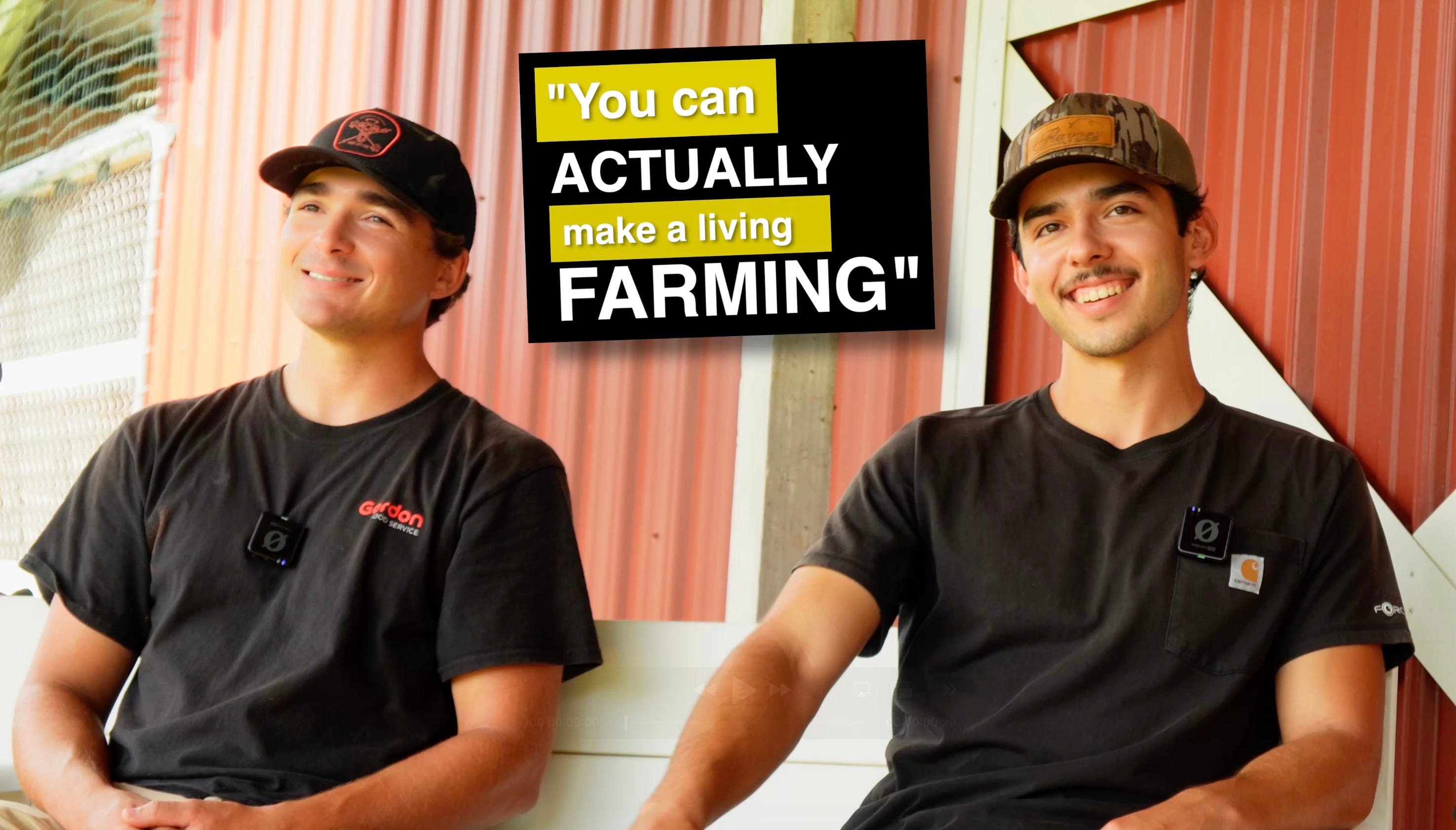Meet the New Generation of Farmers: Patrick & Caden at Cable Family Farm
How two friends turned market beds and pasture-raised chickens into a viable vocation.

Last week I sat down with Patrick and Caden at Cable Family Farm, two friends in their early 20s proving that small-scale agriculture isn’t a pipe dream, it’s a plan.
From 10x20 starter beds to pasture-raised chickens (and a late-night processing run by headlamp) these guys are building something real, rooted, and joyful.
“I didn’t know small-scale agriculture was possible.”
Patrick told me he always wanted to work outdoors and eat real food—but he assumed farming meant 1,000 acres and granddad’s tractor. Caden cracked that myth. As a high-school senior in 2022, he launched a market garden on family land, selling whatever they could grow to folks at his grandma’s church. Word spread. Confidence grew. So did the beds.
“You don’t want to work hard without hope,” Patrick said. “Caden helped me see a future—and a living—in small-scale ag.”
Friendship into partnership
The two reconnected after middle school—lifting, playing guitar, swapping ideas—and eventually, spreadsheets. Caden shared the numbers from farmers markets and a six-month stint at a larger, conventional produce operation (70 acres, tilled plastic culture, ~25 workers total).
That contrast clarified their path: stay small, stay nimble, and design systems they could run themselves.
From market garden to chickens on pasture
Their “we’re doing this” moment landed around a campfire, guitars in hand. They drove to Polyface the next week—not for a touristic selfie, but to stand in the presence of a working model. Back home, they got family buy-in, built pasture chicken tractors, and mapped a first season.
Reality, of course, followed: long days, longer nights.
The first big processing? It crept past midnight. Headlamps, 2 a.m., 300 birds. Prepared (because they’d done the homework) but humbled by the clock. That’s farming. That’s how memories get made.
Selling, pricing, and learning the craft of the customer
Caden’s first customers were church friends; then they stepped up to markets (starting in China Grove). He’d ring up produce at the farm store where he worked, then go home and run the math on beds, yields, and price points. The lesson: choose your scale and your customer intentionally, and let that define your system—not the other way around.
Fulfillment beats “free time”
They don’t romanticize the grind. Caden’s balancing college in another town—class on Tuesday, back to the farm Friday. Free time? Not much. But purpose fills the gaps.
“Take a seed or a baby chick to the best food someone’s ever tasted—that’s fulfillment you can’t quantify.”
Sacrifice is part of the culture: living below your means, working for free in the early days, giving up Saturday plans when the farm calls. It’s also the antidote to the “escape purchases” so many city folks make to fill a meaning gap.
The calling—and stewardship
Both young men talk about feeling called. Stewarding land in ways that let animals “do what they were created to do”—chickens on grass and in sunlight, not stacked in steel. Profit matters, but quality done the right way is the North Star.
Getting more young people into agriculture
Their take: education first.
Most people’s mental picture of “agriculture” is only corn, soy, and big iron. Show them no-till permanent beds, low upfront costs, modular growth, and start-small experiments that can scale—or just feed your family and your block.
Not everyone will (or should) farm, but many can grow.
Start where you are. Grow one vegetable. Raise one chicken. Collect one egg. Momentum follows.
Roots matter
Another hard truth: many of us don’t have roots. We move, scroll, and compare.
Patrick and Caden are farming where their families live; that place-based meaning makes the work heavier—and sweeter. It’s harder to find that if you’re adrift, but not impossible. Roots can be grown.
Takeaways from Cable Family Farm
Small-scale is viable: choose systems that match your manpower and land base.
Markets teach: start close to home, learn pricing in public, iterate displays and flow.
Do the math: bed-level yields, time studies, and realistic labor.
Start tiny: prove one bed, one flock, one market—then add blocks.
Stewardship sells: customers taste the difference when animals and soil are honored.
Meaning > free time: fulfillment compounds faster than weekends off.
Viva La Regenaissance!
-Ryan Griggs

